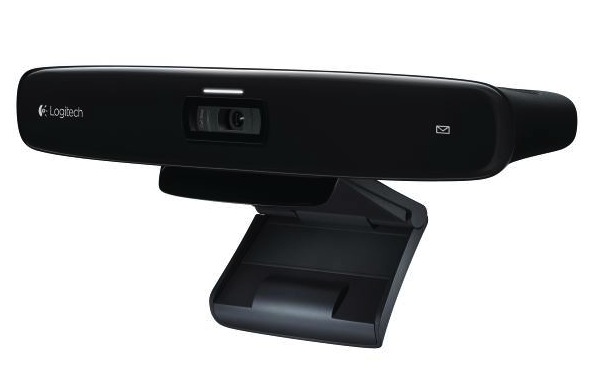As I've mentioned several times before, the burgeoning assortment of embedded vision applications now available for smartphones and tablets—augmented reality, for example, or optical character recognition, or health monitoring, or facial recognition, or gesture interface control—come courtesy of the front- and rear-mounted cameras now common on both hardware platforms. But these emerging applications still aren't yet sufficiently pervasive, either standalone or even in aggregate, to have compelled design engineers to include the necessary image sensors, illumination LEDs, processing horsepower and other resources.
What got those image capture resources into these systems was the combination of still and video photography for the rear-mount camera, and videoconferencing applications such as Skype and FaceTime for the front-mount camera. Once the necessary capabilities were in place, of course, embedded vision applications could also harness them. Similarly, I believe that living room videoconferencing will be the "killer app" that drives widespread adoption of cameras in televisions, making them another example of the "ubiquitous webcam" trend that IEEE Spectrumwrote about late last year. And it's not just me; In-Stat forecasts that the living room video calling market will surpass 16 million users by 2015.
There's at least one integrated camera-in-television case study that I can point to at the moment; Samsung's Smart TV family, introduced at January's Consumer Electronics Show in a range of sizes, and a product line which I've mentioned in several past writeups. Samsung leverages the camera, processor and connectivity built into the displays for more than just videoconferencing purposes; they also support facial recognition, a gesture interface and other functions.
As an interim step, however, at least two companies have recently introduced webcam peripherals that connect to any TV with a spare HDMI input, using the TV's display and speakers to enable you to see and hear who you're communicating with, and containing a built-in camera and microphone array. First on the scene at January's CES was Tely Labs' telyHD, which is based on a Nvidia Tegra SoC and runs Android. Shown at the top of this page, telyHD costs $250 and garnered a fairly positive review from Mac|Life.
And earlier this month, Logitech unveiled the TV Cam HD, which undercuts the telyHD by $50:

To be clear, both of these units are usable only for Skype videoconferencing purposes…unless, I suppose, you hack their operating systems to support other applications. But before you embedded vision visionaries out there get disappointed, let me offer up this oldie-but-goodie:

It's the Sprint PCS Digital Camera, an external cable-tethered imaging add-on for the Samsung SPH-N400 flip-style cellphone that I owned ten years ago. At the time, integrated-camera phones were nonexistent, and the SPH-N400 accessory was photography-only in its capabilities. A decade later, cameraphones are pervasive, as are embedded vision applications for them. So stay the course, embedded vision pioneers; television camera integration and function expansion are, I'll wager, sooner-or-later inevitabilities.


